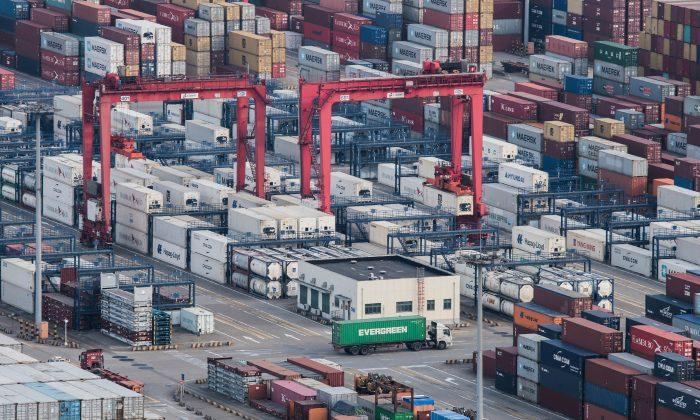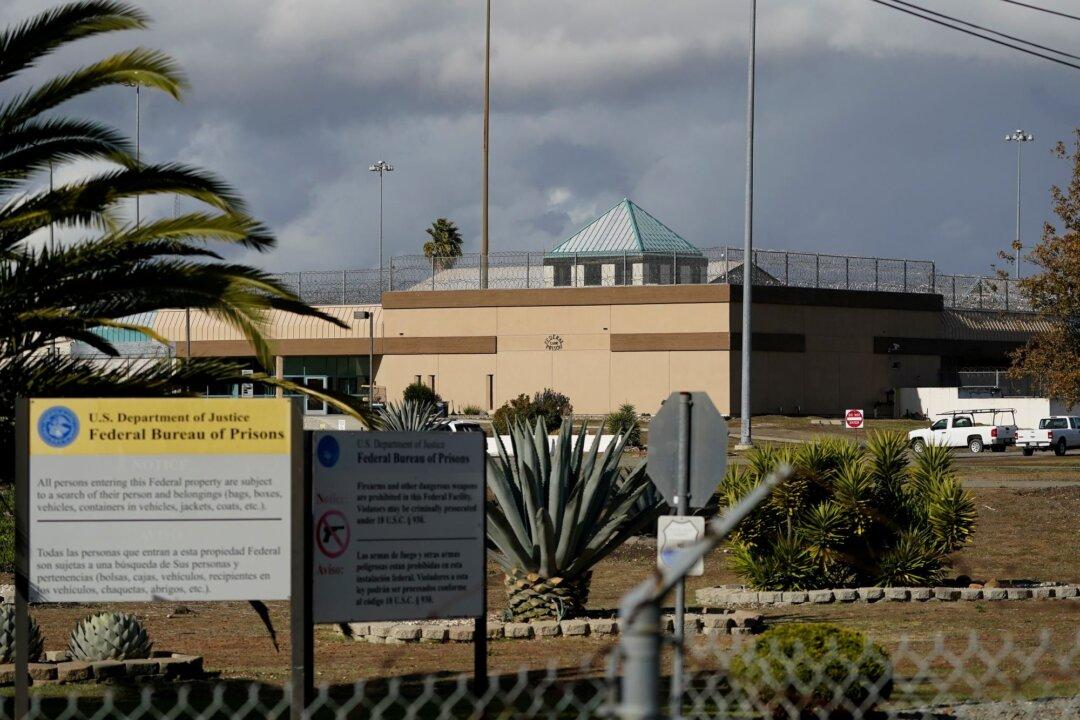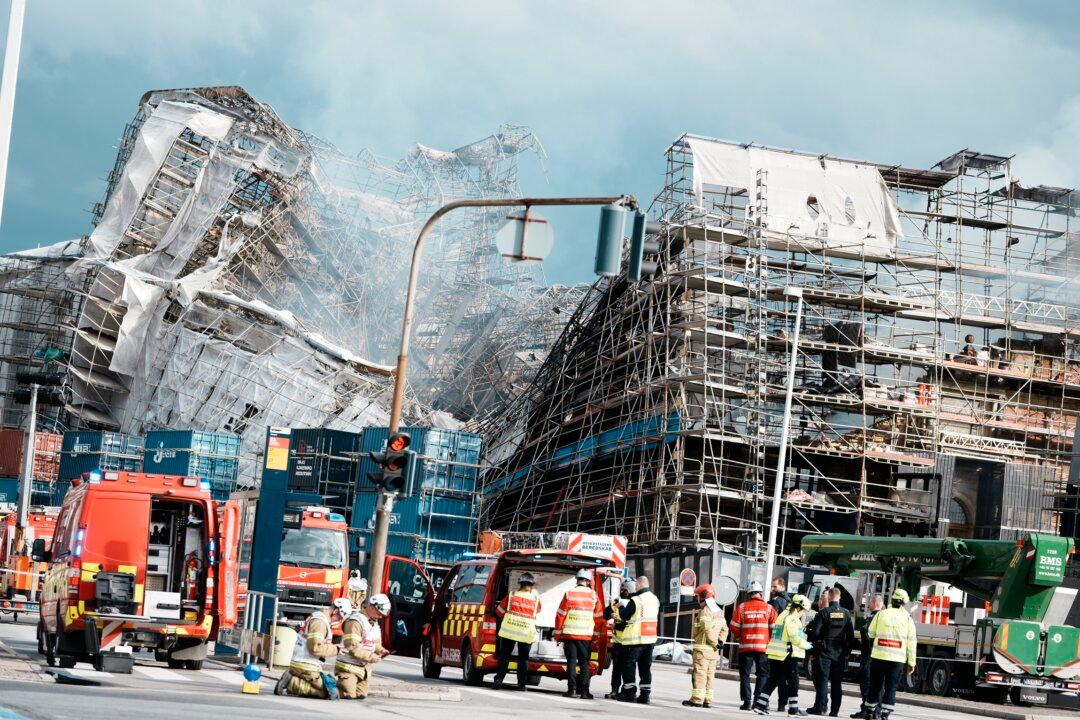BEIJING—China’s export growth sank in November as global demand weakened, adding to pressure on Beijing ahead of trade talks with Washington.
Exports rose 5.4 percent over a year ago to $227.4 billion, a marked decline from the previous month’s 12.6 percent increase, customs data showed Dec. 8. Imports rose 3 percent to $182.7 billion, a sharp reversal from October’s 20.3 percent surge.
That adds to signs a slowdown in the world’s second-largest economy is deepening as Chinese leaders prepare for negotiations with U.S. President Donald Trump over Beijing’s technology policy and other issues.
Chinese exports to the United States rose by a relatively robust 12.9 percent over a year ago to $46.2 billion. Shipments to the U.S. market have held up as exporters rush to fill orders before additional duty increases, but forecasters say that effect will fade in early 2019.
Imports of American goods rose 5 percent to $10.7 billion, down from the previous month’s 8.5 percent growth. China’s politically volatile trade surplus with the United States widened to a record $35.5 billion.
Trump agreed during a Dec. 1 meeting with Chinese leader Xi Jinping to postpone tariff hikes by 90 days while the two sides negotiate. But penalties of up to 25 percent imposed earlier by both sides on billions of dollars of each other’s goods are still in effect.
The Chinese economy grew by a relatively strong 6.5 percent over a year earlier in the quarter ending in September. But that was boosted by government spending on public works construction that helped to mask a slowdown in other parts of the economy.
An official measure of manufacturing activity fell to its lowest level in two years in November. Auto sales have shrunk for the past three months and real estate sales are weak.
Chinese leaders have responded by easing lending controls, boosting spending on construction and promising more help to entrepreneurs who generate the state-dominated economy’s new jobs and wealth. But they have moved gradually to avoid reigniting a rise in corporate and local government debt that already is considered to be dangerously high.
The Trump administration imposed 25 percent duties on $50 billion of Chinese goods in July in response to complaints that Beijing steals or pressures companies to hand over technology. Washington also imposed a 10 percent charge on $200 billion of Chinese goods. That was due to rise to 25 percent in January but Trump postponed it.
Beijing responded with tariff hikes on $110 billion of American goods. Trump has proposed to expand U.S. penalties to all goods from China.
Washington, Europe and other trading partners complain that the Chinese regime’s “Made in China 2025”—which calls for creating Chinese global champions in artificial intelligence, robotics and other fields—violates Beijing’s market-opening obligations.
Trump said Beijing committed to buy American farm goods and cut auto import tariffs as part of the tariff cease-fire. Chinese officials have yet to confirm details of the agreement.
Private sector analysts say that is little time to resolve sprawling conflicts that have bedeviled U.S.-Chinese trade for years. That suggests Beijing will need to find ways to persuade Trump to extend his deadline.
The weakness in November’s Chinese imports came despite tariff cuts on imports from other markets as part of official efforts to generate consumer-driven economic growth.
Xi presided over the opening of an import fair in Shanghai in November that was meant to rebrand China as a welcoming import market. Some 3,600 companies from 152 countries took part in the five-day event. But he gave no response to foreign complaints about technology policy and investment barriers.






Friends Read Free